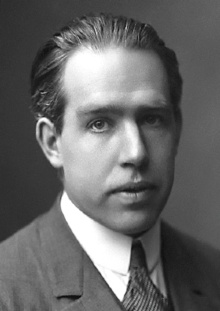In this work, Niels Bohr presents his revolutionary model of the atom, which introduces the concept of electron shells and explains the structure of the periodic table, the form of atoms, and the behavior of electrons in atoms.
 Niels Bohr, Danish physicist and Nobel Prize winner, whose atomic theories revolutionized quantum mechanics. Discover his quotes and passions.
Niels Bohr, Danish physicist and Nobel Prize winner, whose atomic theories revolutionized quantum mechanics. Discover his quotes and passions.
More about Niels Bohr